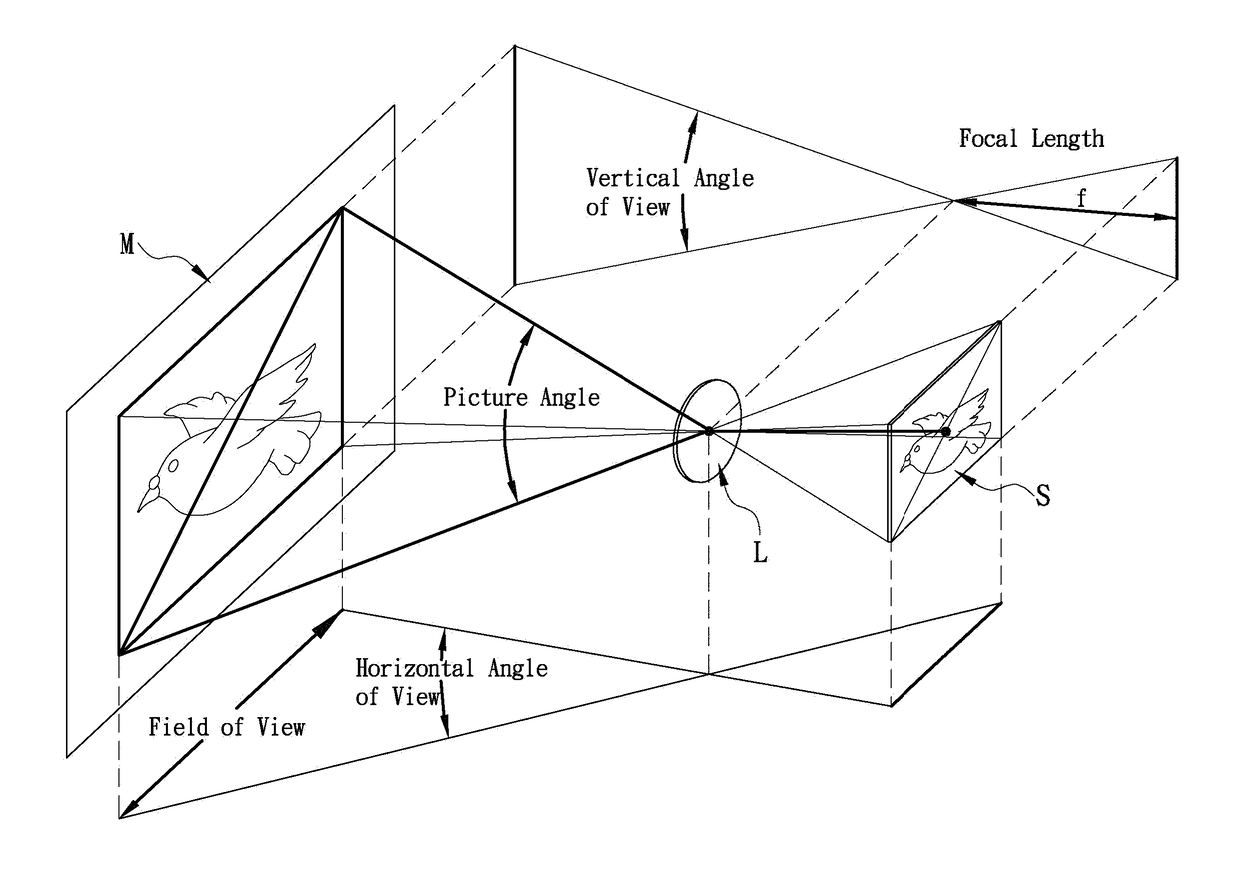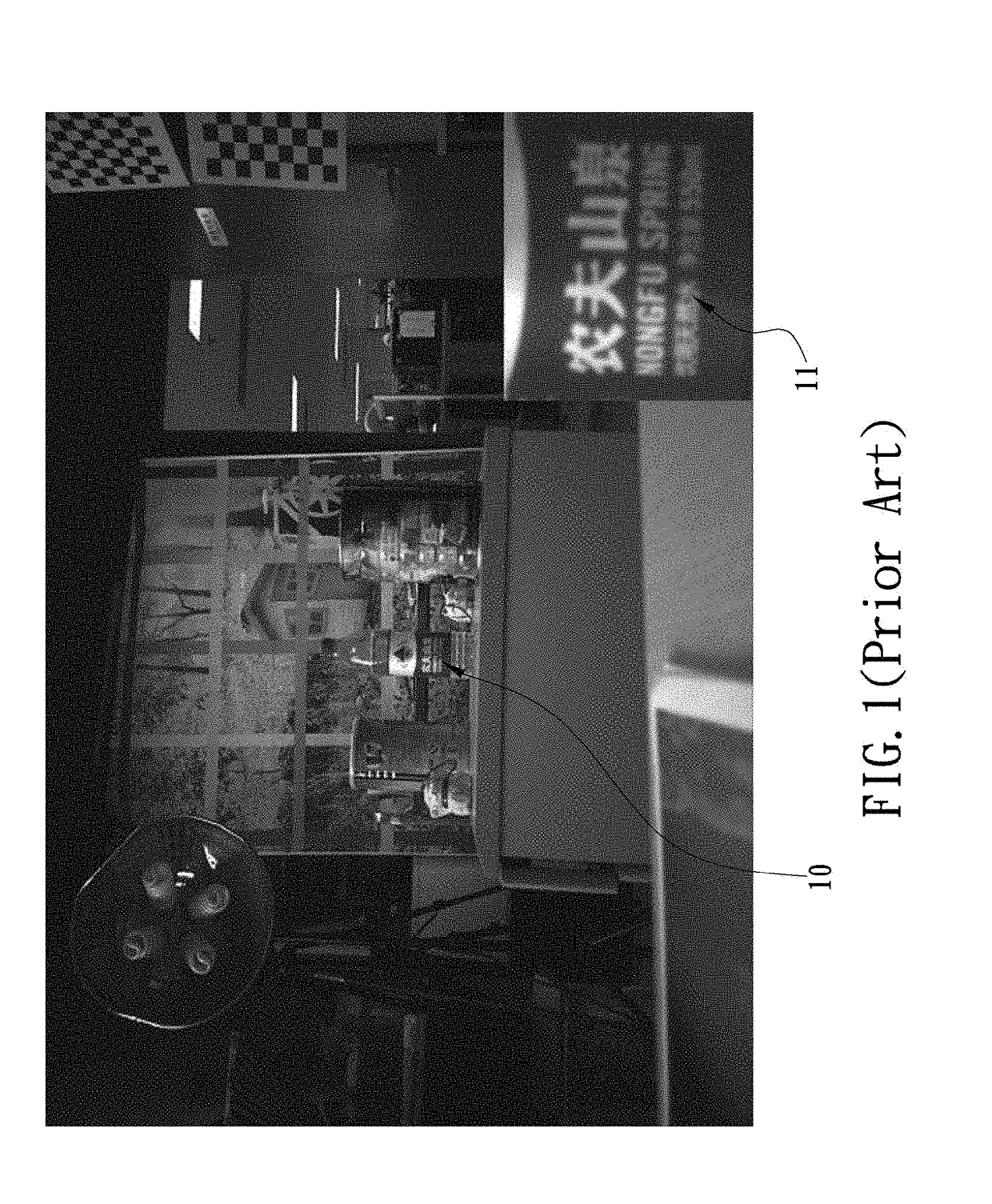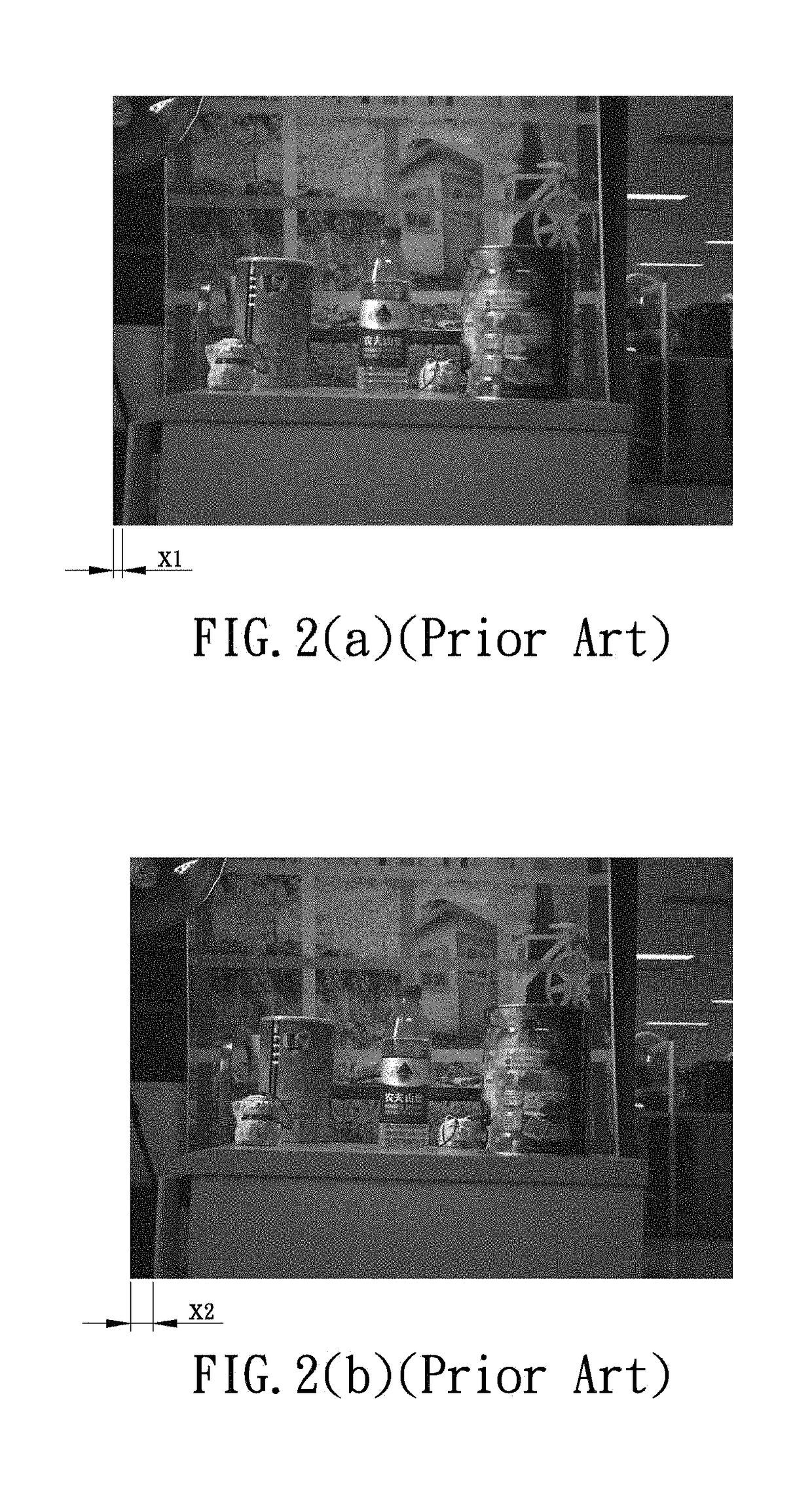. . evolving in the
image sensor chips (e.g.,
CMOS) of the smartphone cameras are increasingly powerful and are gradually reaching to a level threatening the market of professional SLR cameras.
However, the slim and light designing trends of the smartphones also cause each of the cameras equipped therewith only capable of utilizing a smaller sized image capturing element (which is an integration of a lens and an
image sensor made of
wafer) therein due to the size restriction and limited
hardware structure of the smartphone.
Thus, almost every image capturing element installed in a smartphone adopts a
single lens having
large aperture and wide angle design, but without having the ability to provide an optical zooming function.
In general, the original design function of the camera on the ordinary smartphone is mostly for capturing images of people and near objects under the indoor and low light environments, because the design of
large aperture can produce shallow
depth of field as well as obtaining better imaging results, but also prone to the problem of insufficient
depth of field, in particular, it is easy to cause background or foreground out of a fixedly focused object to be blurred.
Therefore, when using the current smartphone camera to capture an image of a magnificent landscape scene, the image being captured will become loose and not sharp enough, and it will also not be easy to capture clear
time effect of the image (such as the image of flowing water, car moving track or light graffiti .
. . , etc.) and, under sunny and light enough environments, the image being captured is often prone to overexposure problems.
(2) The needs of “dual-lenses” or “multi-lenses”: In recent years, various types of 3D or panoramic films have been broadcasted world-widely in the film market, and are very popular to lots of consumers who are in turn eager to produce 3D or panoramic videos through using their owned smartphones. In response, many of the smartphone manufacturers are dedicating themselves to the research and development relating to the applications of 3D or panoramic cameras, and have launched whole new designed smartphones having the functions of capturing 3D or panoramic videos, such as 360-degree
virtual reality (VR) real-time
video streaming, the remote end of
augmented reality (AR), ultra-high-quality
live video broadcast, etc. Since each of the image capturing applications have to be supported by at least two different special lenses, the “dual-lenses” or “multi-lenses” designs are thus becoming to be a requisite accessory on a new generation of smartphones.
(3) Dual-lenses technology unable to achieve a clear and precise optical zooming mechanism: For instance, in 2014, HTC Corporation launched an “One M8” type smartphone having a function of providing the world's first dual depths of field while capturing images, of which the “dual-lenses” technology is built-in with an “Ultra-Pixel with Duo Camera” developed and designed by Altek Corporation, and the “Duo Camera” has a primary lens and a secondary lens installed at the rear surface of the smartphone and capable of working together for capturing images, wherein the primary lens is large than the secondary lens and responsible for capturing the image, and the secondary lens is responsible for recording depth information of the environment, so that a user is able to change the focus position of the image through operating
user interface of the smartphone after capturing the image. In November 2015, LG Corporation launched a “V10” type smartphone, which is built-in with an
image sensor having 5 million pixels along with a 80-degree
normal lens and another image sensor having 5 million pixels along with a 120-degree ultra-wide-angle lens, wherein the dual front lenses design can be chosen to be operated in a standard-angle
field of view or a wide-angle
field of view at the time of selfie, the 120-degree wide-angle lens can capture the image of the entire background (even the image of a group of people) during selfie, and the 80-degree
normal lens can capture the close-up image during selfie. In 2016, LG Corporation released a “G5” type smartphone, of which the dual-lenses design is built-in on the rear surface of the smartphone with an image sensor having 16 million pixels along with a 78-degree
normal lens and another image sensor having 8 million pixels along with a 135-degree ultra-wide-angle lens, wherein the 135-degree ultra-wide-angle lens is able to provide a
view angle 1.7 times wider (even 15 degrees wider than the
view angle of
naked eye) than that of the other smartphone in the market, so that a user can use the smartphone to easily capture more image of a scene without having to keep a long distance with the scene. In addition, many science and technology media also predicted that Apple Corporation may release an “iPhone7” in 2016 built-in with dual-lenses design, which may include two image capturing elements having different focal lengths respectively, so as to enable the “iPhone7” to be switched and operated in a standard mode or a remote scene mode for capturing images. However, in view of the above, none of the aforementioned dual-lenses designs is able to achieve clear and precise optical zooming mechanism on behalves of the smartphones.
Why none of the dual-lenses designs implemented in the aforementioned smartphones is able to achieve a clear and precise optical zooming mechanism?
(1) Causing image of an object being fixedly focused from a long distance to be blurred: Please refer to FIG. 1, because the standard lens and the wide-angle lens are unable to precisely and fixedly focus on the object 10 (such as the
mineral water bottle shown in FIG. 1) from a long distance, so that it will be easy to produce blurred image 11 on the object 10 (such as the blurred text image on the
mineral water bottle shown in the right bottom corner of FIG. 1) while the object 10 being zoomed in.
(2) Causing the object 10 within in the images captured in the zooming procedure to abnormally skip between the images: Please refer to FIG. 2, because the corresponding hardware parameters between the standard lens and the wide-angle lens must exist some differences, such as the differences between fields of view (hereinafter referred to as FOV), picture angles . . . and sizes of the corresponding image sensor chips (e.g.,
CMOS), which inevitably cause the images respectively captured by the standard lens and the wide-angle lens to be different in image ratio, and then cause the corresponding pixels on the images respectively captured by the standard lens and the wide-angle lens to be shifted and have offsets therebetween during the zooming procedure, such as zooming in the object from a
zoom ratio of 1.79 (as shown in FIG. 2(a)) to a
zoom ratio of 1.80 (as shown in FIG. 2(b)), whereby the object obviously and abnormally skips within the two images (such as causing an obvious and abnormal transition skip from x1 to x2 as shown in FIGS. 2(a) and 2(b), respectively).
. . and so on, but if the dual-lenses are merely designed to compensate for the lack of a single
large aperture wide-angle lens design and do not provide an accurate and clear optical zooming mechanism, it will be very difficult to let the cameras of the smartphones reach to a new level comparable to a professional DSLR camera having the optical zooming function.
 Login to View More
Login to View More  Login to View More
Login to View More 


